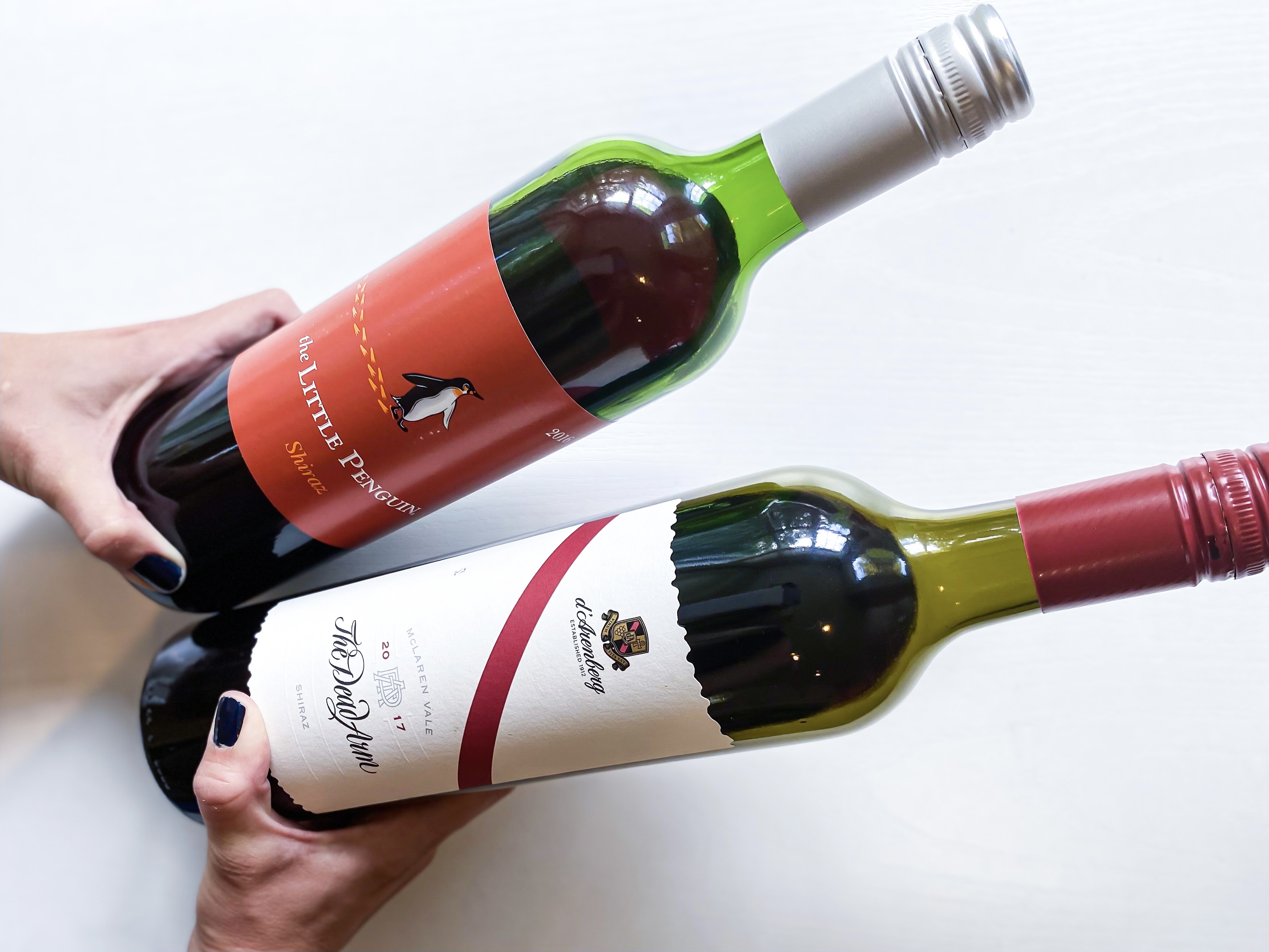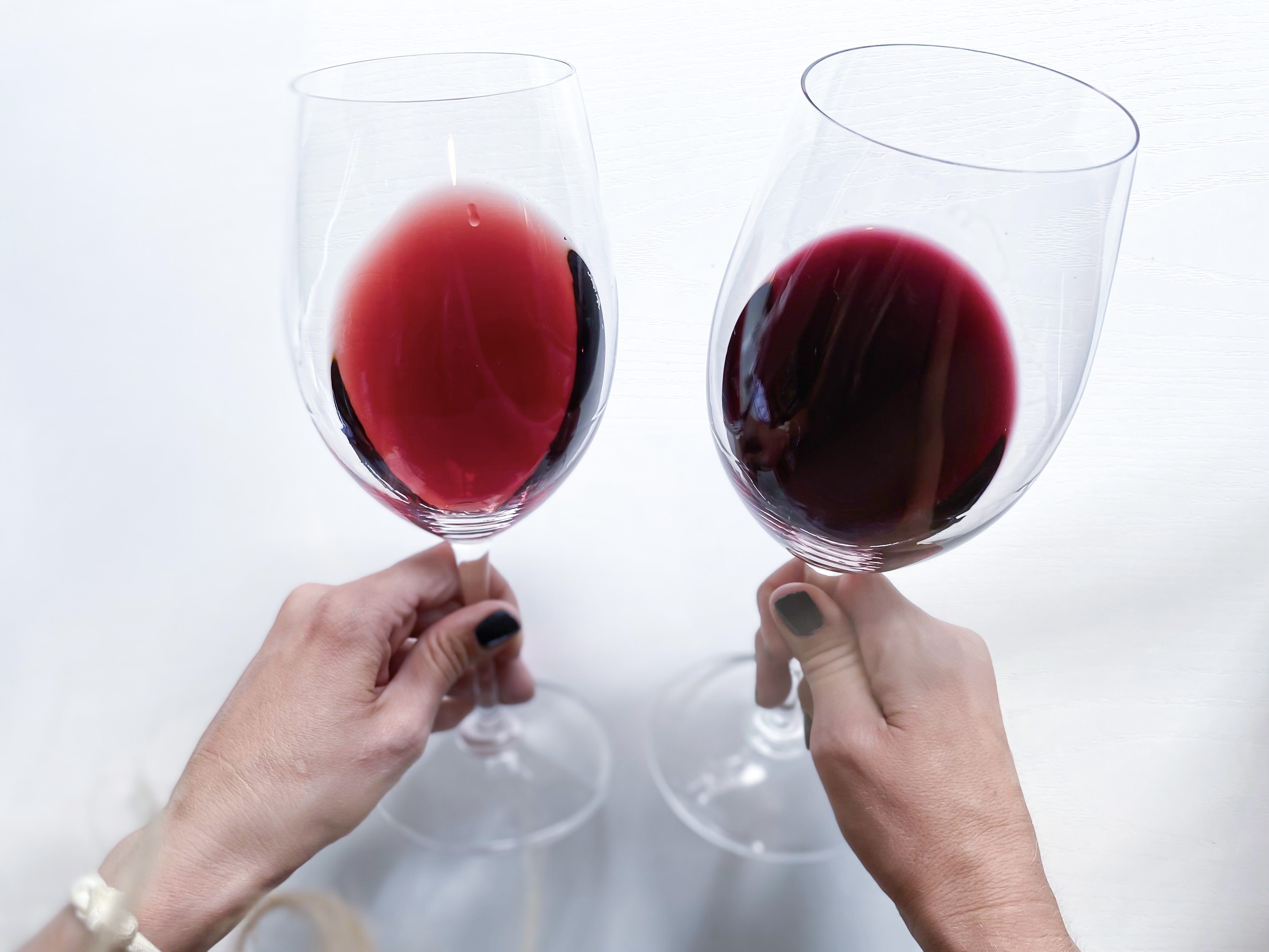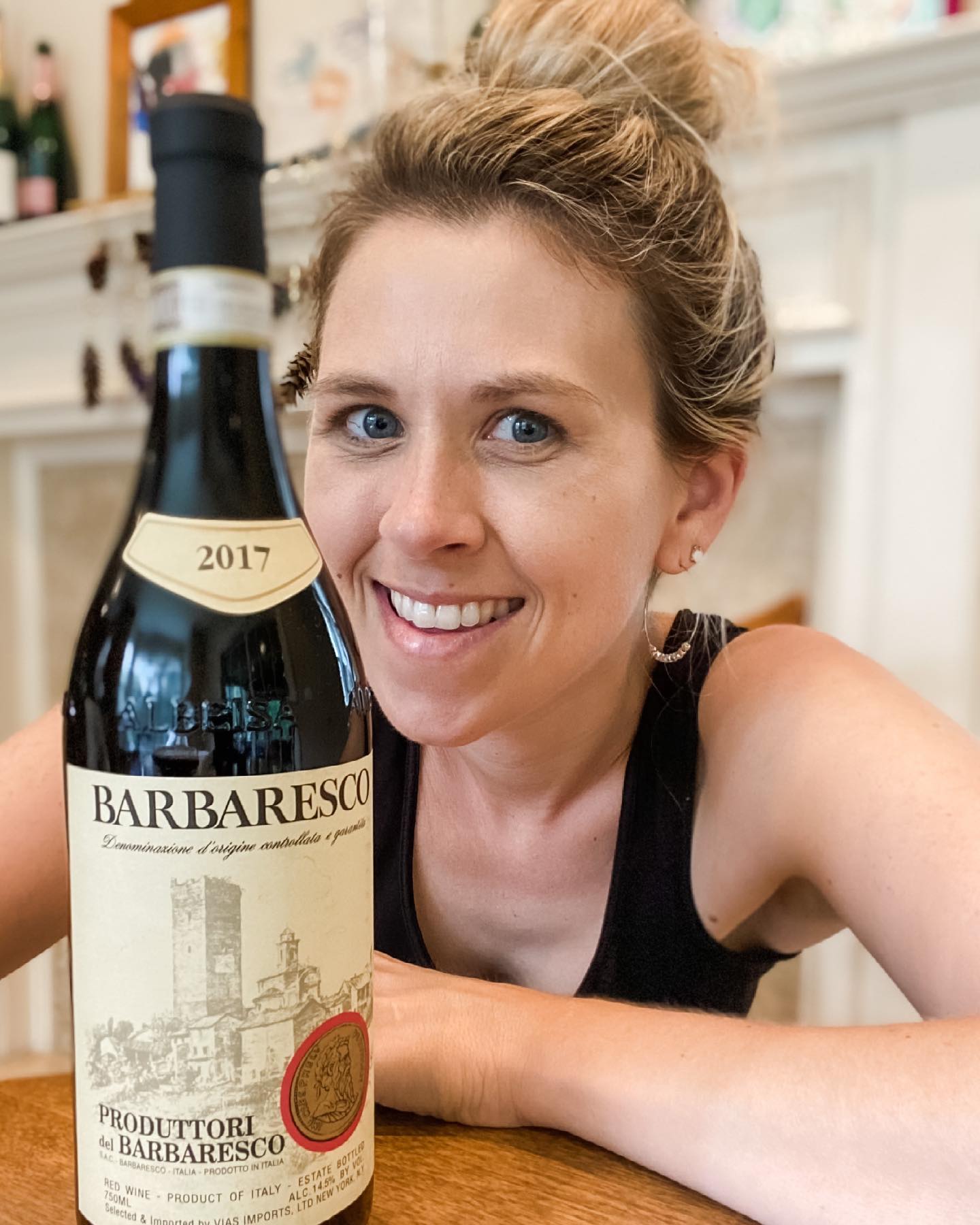
Cheap vs Expensive Wines: Can you taste the difference?
What makes expensive wines different than inexpensive wines? That is the “million-dollar” question. (I get asked often!)
This month I lined up a $6 Shiraz vs a $50 Shiraz to point out some pretty common benchmarks (things to look out for) when tasting a ‘bargain’ wine vs a generally ‘pricey’ wine!
($60 might be ‘cheap’ for some, however, I picked these wines to be relatable and accessible)
Here are some things to look for when comparing:

- Bottles tend to have a lighter tint (less protection from heat and light)
- No region (or country) is listed on the label. This usually means winemaking requirements are looser and grapes could be from anywhere.
- Not as balanced in acid, tannin, body, and alcohol. (I find them to either taste “watered down” on one end OR somewhat cloying and unnaturally concentrated on the other.)
- Shorter finish (the flavors and structure disappear quickly)
- Mostly fruity flavors (less earth, oak + other tertiary notes)
- Bottles tend to have a darker tint and are generally thicker (preventing light and heat from damaging the wine)
- Specific region listed on the label. Usually protected regions have stricter (quality-focused) winemaking requirements
- Balanced in acid, tannin, body, and alcohol. Everything feels in alignment for that specific variety.
- Long finish (the flavor and structure linger for a while)
- Lots of complex flavors (more earthy, tertiary notes, and often oak)

🚫1. SWEET wines don’t always = cheap wines
Some of the most sought-after, age-worthy, expensive wines are sweet!
$$$ Examples: Sauternes, Tokaji, German Riesling
What leads to this misconception is many bulk wines are made with lesser quality grapes that don’t have as much flavor concentration, so producers may add sweeteners such as RCGM (rectified concentrated grape must) to make the wine feel “fuller” and appear “richer”
🚫2. SCREW CAP wines don’t always = cheap wines
There is a fair share of high-end screwcap bottles that are finally starting to circulate the globe and appear on restaurant lists!
$$$ Examples: Australian (Shiraz, Cabernet, Riesling), New Zealand Pinot Noir, German Riesling, Austrian wines
What leads to this misconception is the majority of cheap mass-produced wines that you will see in US grocery stores are often screwcap …which gives the illusion that all wines under screw cap must, in fact, be less quality
🚫3. BLENDS don’t always = cheap wines
Blending varieties creates consistency and reliability which has led to some of the finest, balanced and most age-worthy wines in the world! Some famous regions in France such as Bordeaux produce blends almost exclusively!
$$$ Examples: Bordeaux, Rhone Valley, Tuscany (Super Tuscans), Rioja
What leads to this misconception is that in years past, “jug wines” made up a majority of blends sold in the U.S. giving the impression that most blends must be less quality
Even though many inexpensive wines are not typically age-worthy, they can STILL be quality for that particular style. The general pointers above don’t necessarily mean a wine is good or bad (that’s subjective)!
Keep buying what you like. I have plenty of inexpensive wines that I love!
My favorite value wines and regions include: Vinho Verde, Spanish white wines, Austrian reds like Blaufrankisch + Zweigelt, South African red blends, Italian Barbera + Dolcetto, + Cremant d’Alsace sparkling!
Let me know if you have additional examples or ideas about these!
You can browse specific varieties for other common tasting notes HERE!


A Certified Sommelier and Certified Specialist of Wine with a passion for everything wine + beverage!


